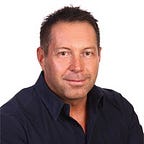THE EFFECT of Human Cell Growth Factors on hair growth
Thousands of rands of hard earned cash is spent on restoration of hair growth. The frustration of this unwanted phenomenon is experienced by men and women of all ages. Currently, only low level laser, topical Finasteride and Minoxidil are approved by the Food and Drug Administration for the treatment of androgenic hair loss. The current topical treatments however come with their fair share of side effects. As a result, large sums of money are being spent by individuals on anti-hairloss products every year, with minimal results.
UNDERSTANDING HAIR GROWTH
A complex series of pathways trigger hair growth at a molecular level. These series of pathways involve growth factors which are important in regulating a variety of cellular processes, causing each hair follicle to undergo different phases of hair growth which can be described as follows:
The ANAGEN PHASE (active growth), which is characterised by proliferation of cells leading to hair growth. This phase lasts between 2–7 years. The CATAGEN PHASE (cessation of active growth),which is characterised by shrinking of the hair follicle and detachment from the dermal papilla and lasts about 10 days.
The TELOGEN PHASE (resting phase) where the hair follicle remains dormant while a new hair follicle begins to grow.
The EXOGEN PHASE (shedding phase), marked by shedding of old hair which is than subsequently replaced by a new hair follicle.
The complete hair cycle can range from 16 to 20 months, depending on gender. To ensure that there are a constant number of follicles at any given time, it is imperative that the number of follicles in the resting and active phases remain relatively equal. Any factor that upsets this delicate balance would result in
Alopecia.
Alopecia thus develops when there is cessation of new hair growth resulting in the fall out of older hair not being replaced by new hair. This can either be a permanent or temporary situation, depending on the cause. The treatment for alopecia requires a thorough work-up to identify and treat underlying factors that may be contributing to decreased hair growth or accelerating hair loss.
ROLE OF GROWTH FACTORS IN HAIR GROWTH
Growth factors regulate growth and differentiation of many cell types. One such type of growth factor, Insulin-like growth factor-1 (IGF-1), has been identified as an important factor in stimulating proliferation of the hair cell matrix as well as assisting in increasing blood flow to the root of the hair. IGF-1 can now be synthetically produced using advanced modern techniques, such as transient expression of genes, which mimic the human growth factors almost perfectly. This process has been used to develop a plant based synthetic human Insulin-like Growth Factor-1 contained in the Aesthet Recovery Serum Sanitatum. Using the natural plant expression system allows the advantage of producing a high yield of IGF-1 contained in the serum.
By Dr Safiyya B.E Lambat
